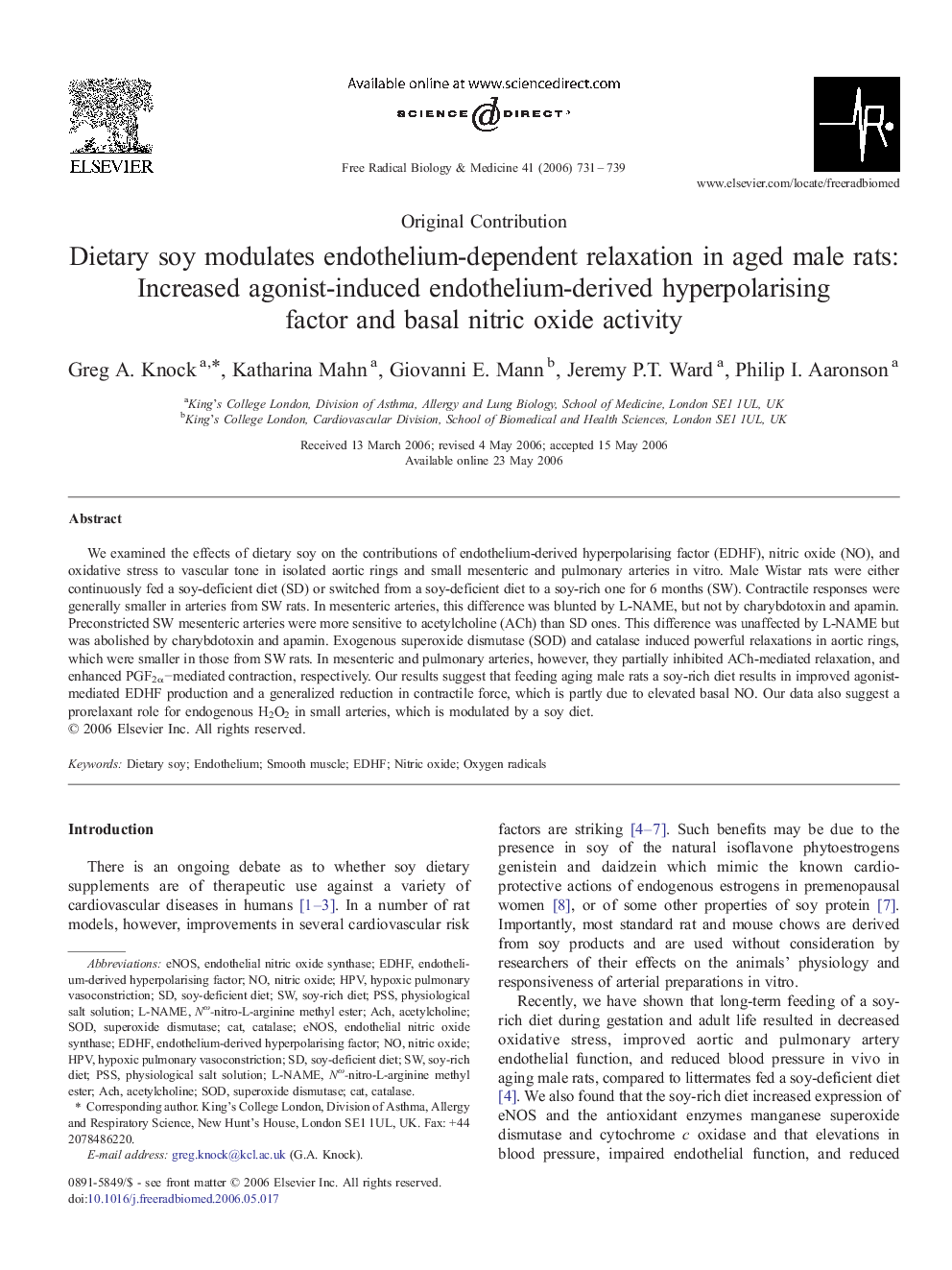| Article ID | Journal | Published Year | Pages | File Type |
|---|---|---|---|---|
| 1912038 | Free Radical Biology and Medicine | 2006 | 9 Pages |
We examined the effects of dietary soy on the contributions of endothelium-derived hyperpolarising factor (EDHF), nitric oxide (NO), and oxidative stress to vascular tone in isolated aortic rings and small mesenteric and pulmonary arteries in vitro. Male Wistar rats were either continuously fed a soy-deficient diet (SD) or switched from a soy-deficient diet to a soy-rich one for 6 months (SW). Contractile responses were generally smaller in arteries from SW rats. In mesenteric arteries, this difference was blunted by L-NAME, but not by charybdotoxin and apamin. Preconstricted SW mesenteric arteries were more sensitive to acetylcholine (ACh) than SD ones. This difference was unaffected by L-NAME but was abolished by charybdotoxin and apamin. Exogenous superoxide dismutase (SOD) and catalase induced powerful relaxations in aortic rings, which were smaller in those from SW rats. In mesenteric and pulmonary arteries, however, they partially inhibited ACh-mediated relaxation, and enhanced PGF2α−mediated contraction, respectively. Our results suggest that feeding aging male rats a soy-rich diet results in improved agonist-mediated EDHF production and a generalized reduction in contractile force, which is partly due to elevated basal NO. Our data also suggest a prorelaxant role for endogenous H2O2 in small arteries, which is modulated by a soy diet.
